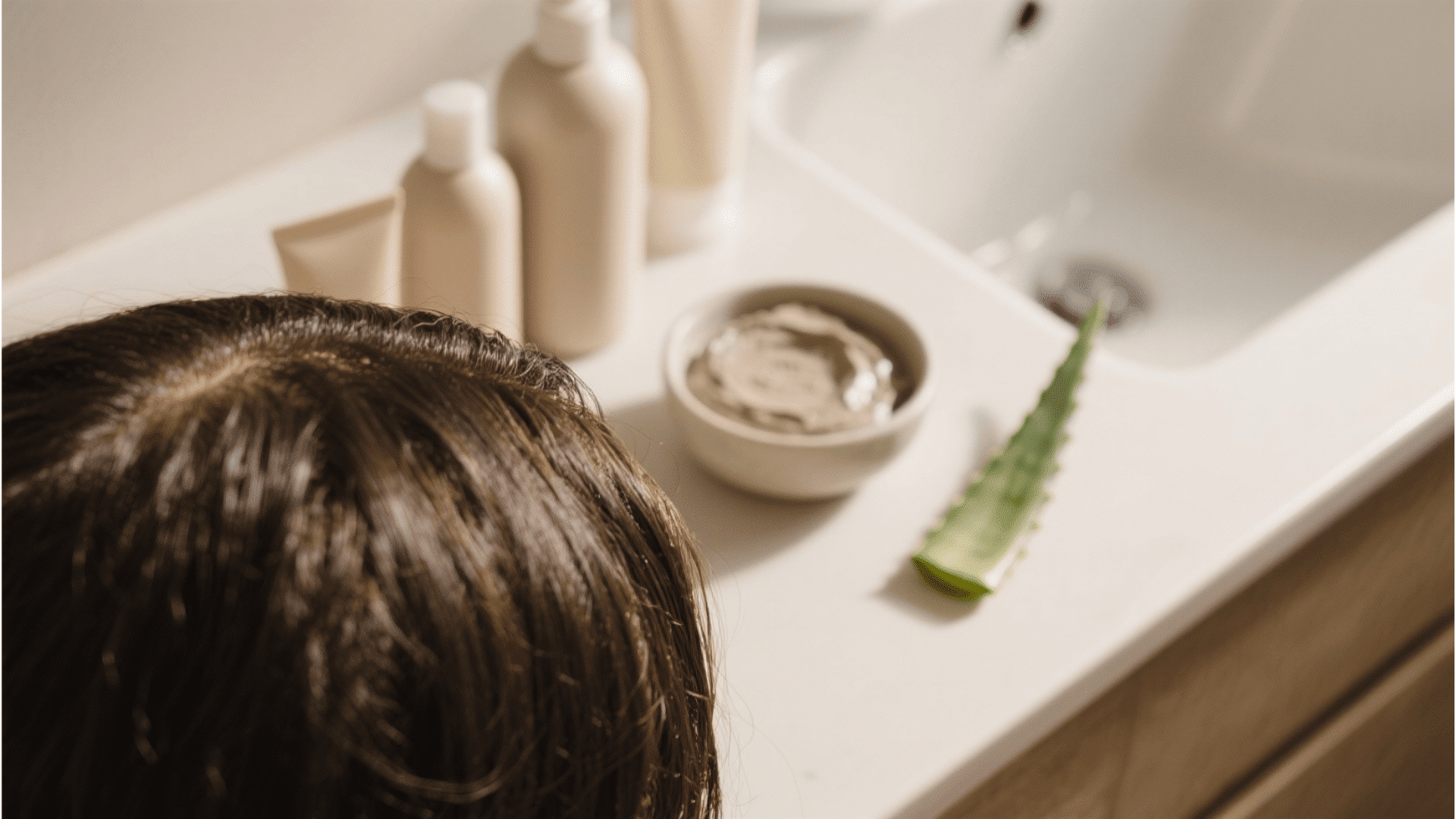I used to stare at my reflection each morning, wondering: “why is my hair so oily?” This mysterious grease appeared regularly, turning my freshly washed hair into a heavy, uncomfortable burden within hours.
There’s something almost supernatural about how quickly an oily scalp sabotages your confidence. Behind this lies a complex interplay of hormonal signals, genetic codes, and subtle habits conspiring against you.
Your oily hair isn’t just a random curse; it’s your scalp’s cryptic way of telling you something important.
The answers to this greasy mystery are lurking beneath the surface, waiting to be uncovered. The secret to conquering your oily scalp is closer than you think.
What Is Sebum & How the Scalp Works?
Sebum is the natural oil our body produces to keep skin and hair healthy. On the scalp, tiny sebaceous glands release this oil to moisturize and protect each strand.
In the right amount, sebum is beneficial; it keeps hair soft, shiny, and flexible.
The problem begins when these glands produce excessive amounts. That’s when you notice an oily scalp and oily hair, leaving it flat, heavy, and harder to style.
Understanding how sebum works is the first step toward finding balance and keeping your scalp and your hair looking and feeling fresh.
Signs of an Oily Scalp
An oily scalp manifests in various ways, and the signs are usually easy to notice. Recognizing these symptoms helps in finding the right care and products to manage scalp oiliness.
| SIGN | WHAT IT FEELS or LOOKS LIKE |
| Greasy or weighed-down hair | Hair gets oily quickly after washing. |
| Sticky or heavy roots | Roots feel coated and heavy due to excess sebum |
| Shiny scalp | The scalp appears glossy or slick from oil buildup |
| Itching or irritation | The scalp feels uncomfortable or itchy, alongside oiliness |
| Scalp buildup | Hair feels dirty even when freshly washed |
| Thin or fine hair | Oiliness shows faster since strands coat easily |
| Greasy flakes | Flakes appear oily or clumped instead of dry |
If these symptoms occur frequently, it is a clear sign of scalp oiliness that may require a change in routine or products.
Oily Scalp vs. Oily Hair: The Difference
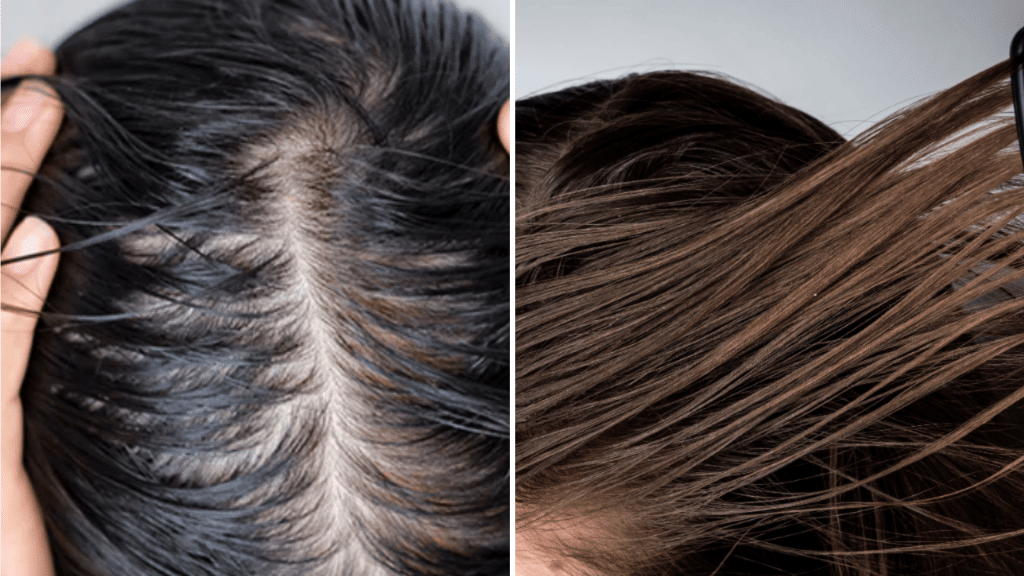
An oily scalp and oily hair are related but not exactly the same.
Oil, or sebum, is produced by the scalp to keep the skin and hair healthy. When the scalp makes too much sebum, it can travel down the hair shaft, making the hair look greasy.
People with straight hair often notice greasy hair faster because oil spreads easily, while curly or thick hair may trap oil near the scalp.
If someone keeps asking, “why is my hair so oily?” it may be due to scalp issues like overactive glands, buildup, or irritation.
If the roots feel greasy but the ends stay dry, it’s likely a scalp-related problem.
Why Do People Get Oil in the Scalp?
An oily scalp develops when the scalp produces too much sebum. This is often influenced by a mix of biological, lifestyle, and environmental factors.
- Overactive sebaceous glands: These glands can produce excess oil, which leads to greasy hair.
- Hair type and texture: Straight hair allows oil to travel quickly down the strand, while curly or textured hair traps oil near the roots, leaving the ends dry.
- Thin hair: Oil shows faster because each strand is easily coated.
- Genetics and hormones: Puberty, pregnancy, and hormonal changes can increase oil production.
- Lifestyle habits: Diet, stress, poor sleep, and improper washing routines can upset oil balance.
- Environmental factors: Humidity and pollution may trigger more oil.
- Scalp microbiome imbalance: Changes in natural bacteria or yeast can disturb oil control.
Everyday Habits that Make Your Hair Oilier
An oily scalp or oily hair isn’t always due to genetics or hormones; often, daily routines and small habits are the real reasons someone keeps saying Why is my hair so oily.
| HABIT | EFFECT ON SCALP & HAIR |
| Over-washing or under-washing | Washing too often strips natural oils, causing more production; washing too little lets oil build up. |
| Using harsh shampoos or heavy conditioners | Irritates the scalp or weighs hair down, making it look greasy. |
| Touching hair too often | Transfers dirt and oil from hands to hair, speeding up greasiness. |
| Wrong brushes or styling tools | Spreads oil unevenly along strands, leaving roots greasy. |
| Product buildup | Leave-in sprays, oils, or dry shampoos collect on the scalp and trap grease. |
By recognizing these everyday habits and making small routine adjustments, people can effectively manage their oily scalp. This helps keep their hair looking fresh and clean for much longer periods.
How to Manage and Treat Oily Scalp
Scalp Oiliness can make hair look flat, greasy, and lifeless. The good news is that a few simple changes to your routine can help bring balance back.
1. Daily and Weekly Care Tips
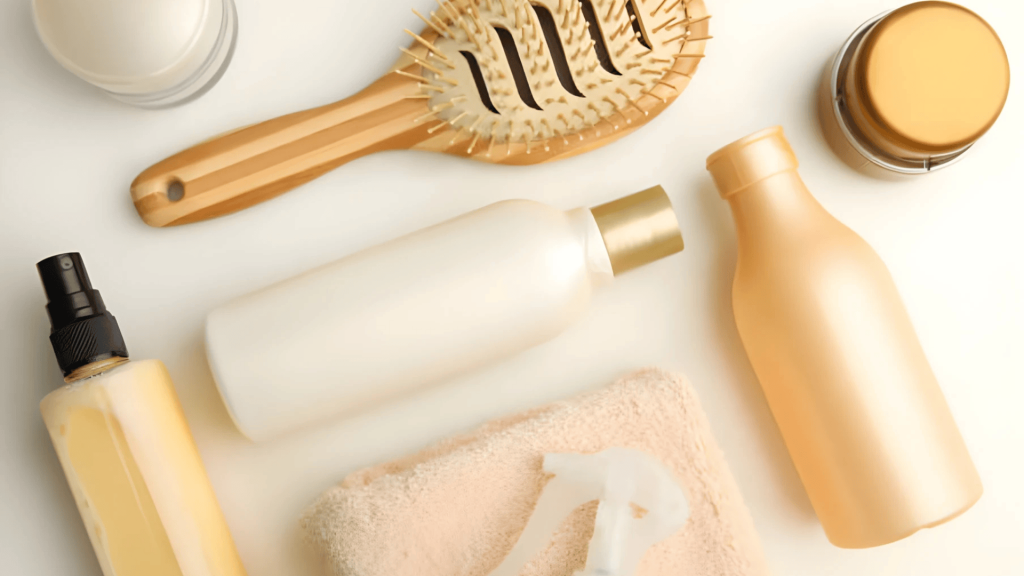
- Choosing the right shampoo: A gentle, sulfate-free or clarifying shampoo helps remove excess oil without stripping the scalp. Overly harsh formulas can make glands produce even more oil.
- Scalp exfoliation: Using a scrub or mild chemical exfoliant once a week helps clear away dead skin cells, sweat, and product buildup that can trap oil.
- Correct washing techniques: Washing with lukewarm, not hot, water and focusing shampoo on the scalp prevents irritation and over-drying.
- Conditioning tips: Apply conditioner only to the mid-lengths and ends. Applying it to the scalp can weigh hair down and exacerbate greasy hair.
- Proper drying & styling routines: Avoid using very hot blow dryers or dirty brushes, as heat and residue can encourage more oil and dullness.
2. Natural and Home Remedies
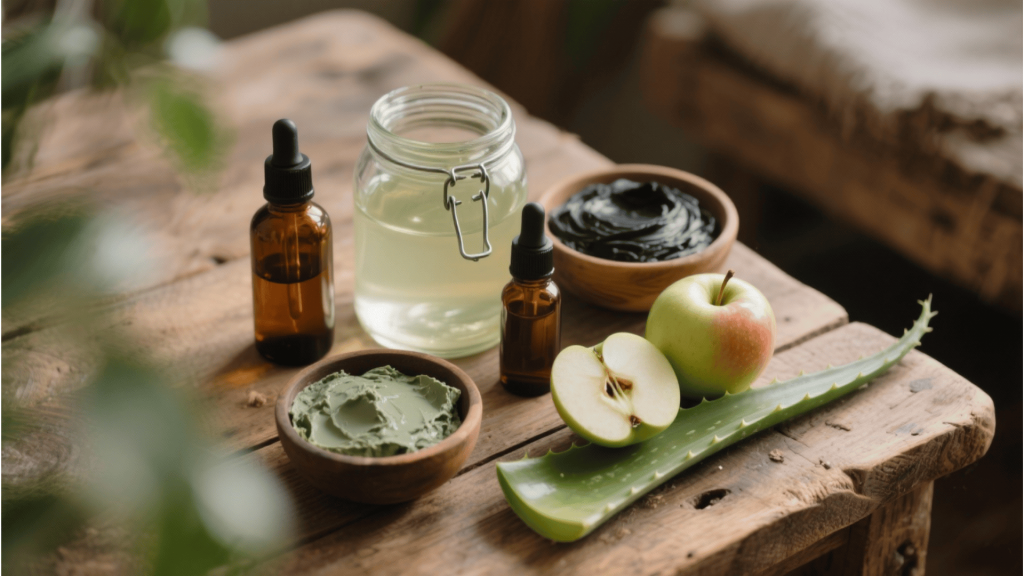
- Apple cider vinegar rinses: Diluting vinegar with water helps balance the scalp’s pH and cuts through grease.
- Aloe vera: Soothes the scalp, reduces irritation, and keeps oil levels steady.
- Tea tree or rosemary oil: These natural oils have properties that may help regulate sebum and keep the scalp healthy.
- DIY clay or charcoal masks: These absorb extra oil and impurities, leaving the scalp refreshed and hair lighter.
3. Lifestyle Adjustments

- Nutrition and hydration: Consuming fewer oily or processed foods and drinking sufficient water helps maintain scalp balance.
- Managing stress: Stress hormones can increase oil production; therefore, relaxing activities and exercise are beneficial.
- Sleep and scalp health connection: Getting enough rest allows the body to regulate hormones, which keeps the scalp and hair from becoming too oily.
By using the right products, practicing healthy habits, and trying natural remedies, people can manage oil production and keep their scalp fresh.
Right Products for Controlling Scalp Oiliness
Using the right products can help balance scalp oiliness and keep hair looking fresh. The key is to choose formulas with ingredients that cleanse without stripping natural oils.
1. Shampoos for Scalp Oiliness
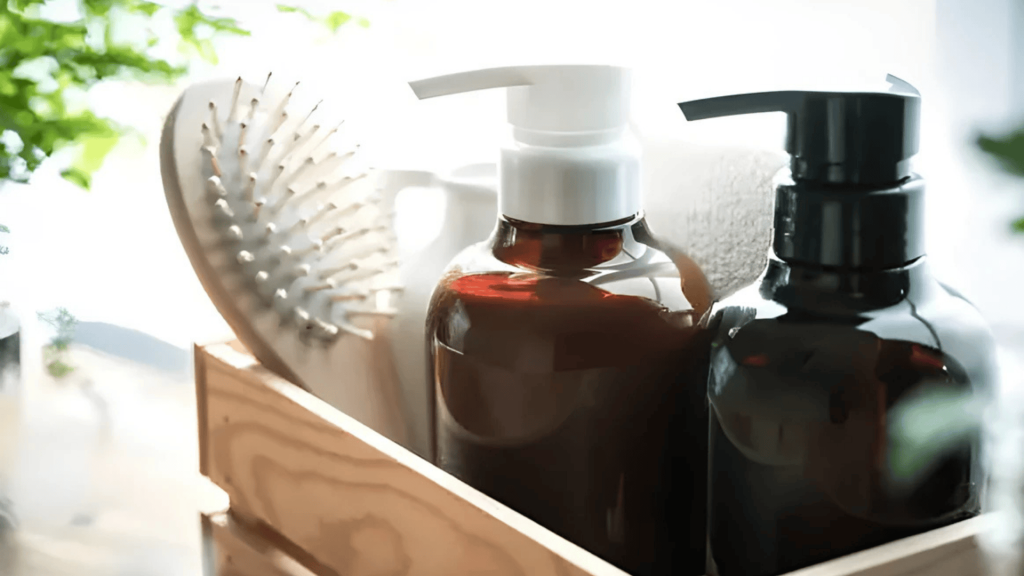
Look for clarifying or balancing shampoos with ingredients like selenium sulfide, benzoyl peroxide, sodium lauryl sulfate, salicylic acid, zinc pyrithione, tea tree oil, or witch hazel.
These help remove excess sebum and reduce buildup.
2. Lightweight Conditioners and Leave-Ins
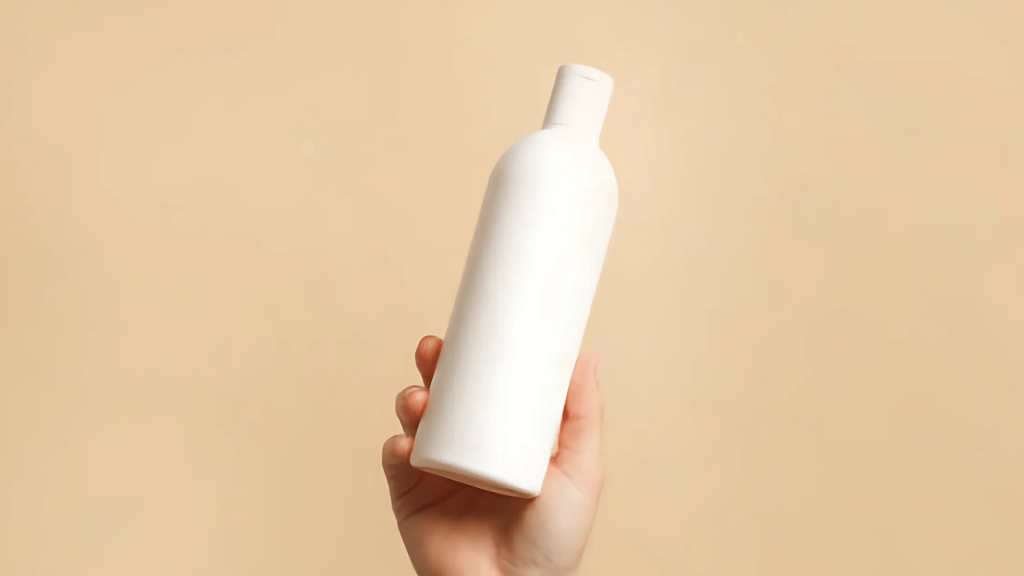
People should choose lightweight, silicone-free conditioners or water-based formulas that do not weigh the hair down. Volumizing products work well since they add lift without creating extra grease.
Conditioner should be applied only to the mid-lengths and ends of the hair. Placing it near the scalp often leads to greasy roots.
3. Dry Shampoos
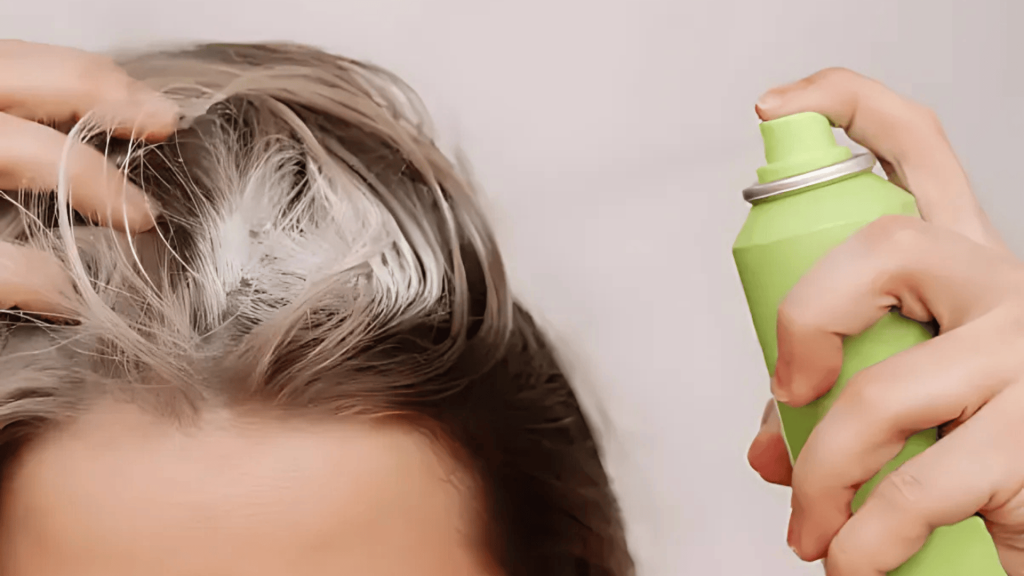
Dry shampoos are great for refreshing greasy hair between washes and can make it look cleaner quickly. However, they should never replace regular shampooing as a primary part of one’s routine.
Using these products too often can cause buildup, clog pores, and lead to scalp issues. Use them moderately to maintain scalp health!
4. Scalp Serums and Pre-Wash Treatments
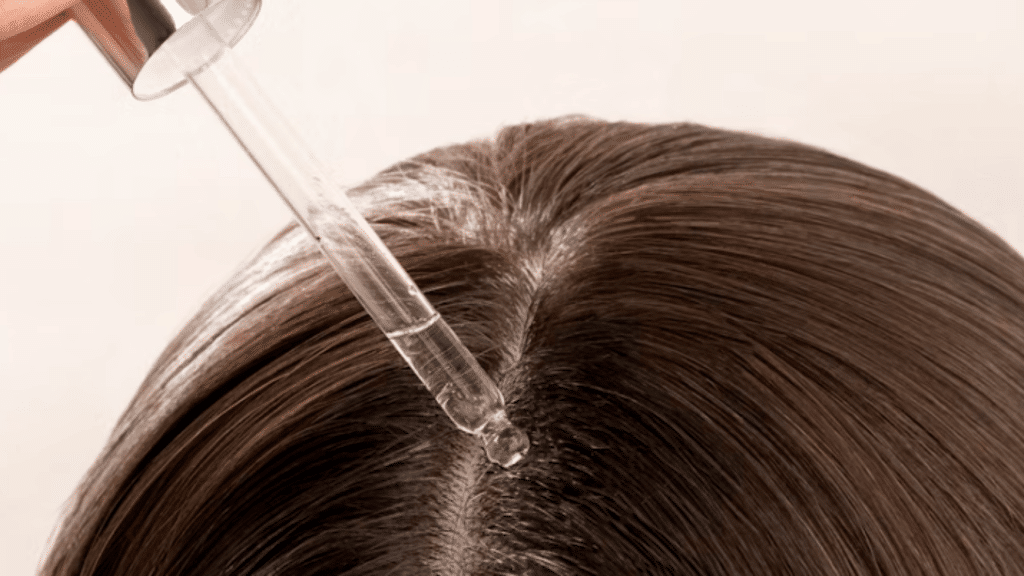
Products with niacinamide, charcoal, or clay are useful for maintaining scalp balance. These ingredients can help calm irritation and support healthier scalp function.
They also work to absorb excess oil and prevent buildup. With regular use, they may promote long-term scalp health and freshness.
Choosing the right products makes it easier to control scalp oiliness and enjoy healthier, fresher-looking hair every day.
Best Tips to Prevent Scalp Oiliness in the Long Run
Managing scalp oiliness isn’t just about quick fixes, it’s also about building healthy habits for the future. By making small, steady changes, people can keep oil under control and enjoy clean, fresh-looking hair for longer.
- Setting the right wash schedule: Washing too often can strip natural oils, while washing too little lets oil pile up. Finding the right balance for one’s hair type is key.
- Scalp-friendly lifestyle and product habits: Eating balanced meals, staying hydrated, managing stress, and choosing gentle, sulfate-free products all support scalp health.
- Seasonal adjustments: Hot, humid summers may require more frequent washes, while cooler months often call for more moisture and gentler care.
- Regular scalp cleansing: Use a clarifying shampoo or scalp scrub once every 1–2 weeks to remove buildup from oils and products.
- Avoid heavy styling products: Waxes, thick creams, and silicone-heavy serums can trap oil and weigh hair down.
- Keep hair tools clean: Wash combs, brushes, and heat-styling tools regularly to prevent the transfer of oil and dirt back to the scalp.
- Protect your scalp from excess heat: Limit the frequent use of hot styling tools, as heat can stimulate oil glands to produce more sebum.
By maintaining regular habits, everyone can easily keep scalp oiliness in check and enjoy healthy, balanced hair. It’s all about consistency and caring for your hair daily!
When to See a Dermatologist
Sometimes an oily scalp or hair is more than just a simple grooming issue. If someone notices constant grease even after adjusting their routine, it may be a sign of an underlying condition.
Conditions such as seborrheic dermatitis, psoriasis, or fungal infections can cause the scalp to produce excessive oil, accompanied by flakes, redness, or discomfort.
Another warning sign is noticeable hair thinning or persistent scalp irritation that does not improve with regular care. In these cases, it’s important to see a dermatologist.
A professional can identify the root cause, recommend the right treatments, and help restore scalp and hair health.
The Bottom Line
Managing my oily scalp used to feel impossible, but I’ve learned that understanding the “why is my hair so oily” question is half the battle.
Once I found my personal triggers, whether they were hormones, genetics, or daily habits, I could finally fight back with the right products and routines.
Your oily hair doesn’t have to control your life anymore. Simple changes like the right shampoo and wash frequency can make a huge difference.
Ready to take control of your oily scalp? Start implementing these proven strategies today and found the balanced, confident hair you’ve been dreaming of.

